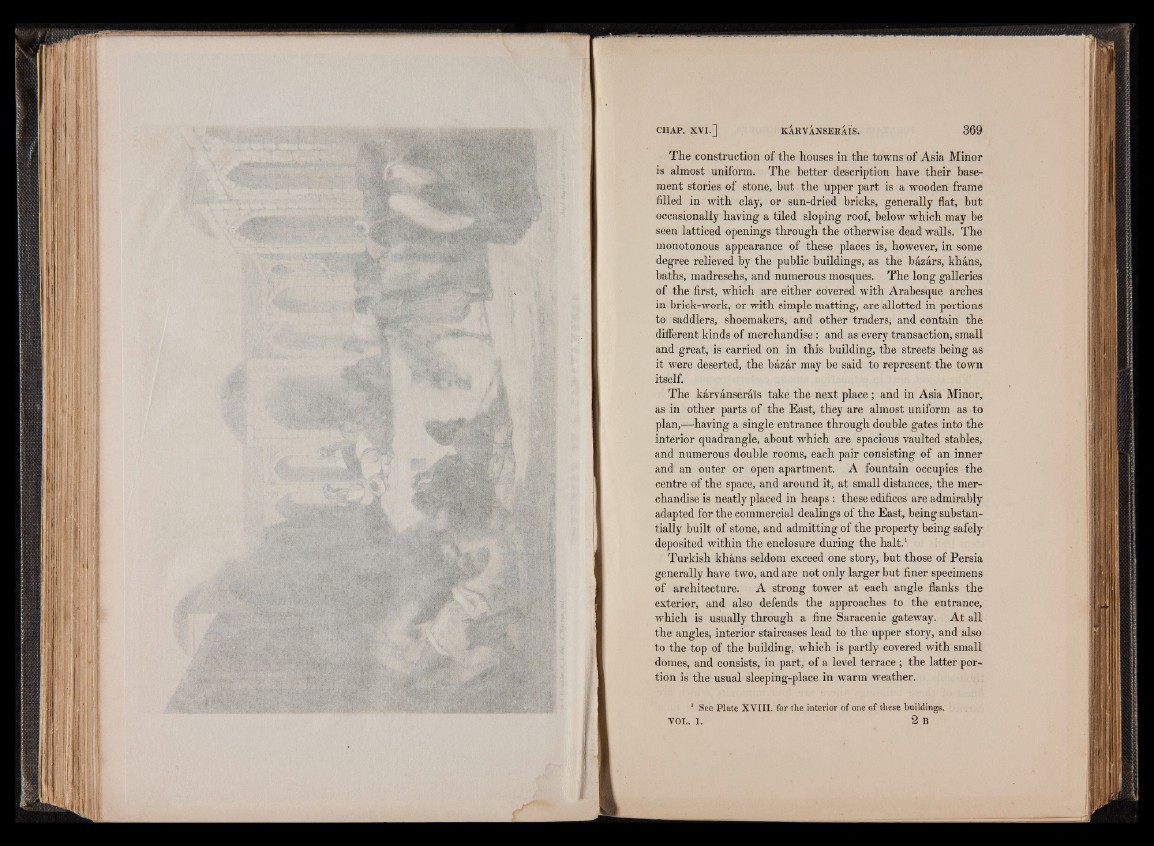
jrnaM
■
" ' I *
.. : 111%
«
(f
The construction of the houses in the towns of Asia Minor
is almost uniform. The better description have their basement
stories of stone, but the upper part is a wooden frame
filled in with clay, or sun-dried bricks, generally flat, but
occasionally having a tiled sloping roof, below which may be
seen latticed openings through the otherwise dead walls. The
monotonous appearance of these places is, however, in some
degree relieved by the public buildings, as the bazars, khans,
baths, madresehs, and numerous mosques. The long galleries
of the first, which are either covered with Arabesque arches
in brick-work, or with simple matting, are allotted in portions
to saddlers, shoemakers, and other traders, and contain the
different kinds of merchandise: and as every transaction, small
and great, is carried on in this building, the streets being as
it were deserted, the bazar may be said to represent the town
itself.
The karvanserais take the next place; and in Asia Minor,
as in other parts of the East, they are almost uniform as to
plan,—having a single entrance through double gates into the
interior quadrangle, about which are spacious vaulted stables,
and numerous double rooms, each pair consisting of an inner
and an outer or open apartment. A fountain occupies the
centre of the space, and around it, at small distances, the merchandise
is neatly placed in heaps : these edifices are admirably
adapted for the commercial dealings of the East, being substantially
built of stone, and admitting of the property being safely
deposited within the enclosure during the halt.1
Turkish khans seldom exceed one story, but those of Persia
generally have two, and are not only larger but finer specimens
of architecture. A strong tower at each angle flanks the
exterior, and also defends the approaches to the entrance,
which is usually through a fine Saracenic gateway. At all
the angles, interior staircases lead to the upper story, and also
to the top of the building, which is partly covered with small
domes, and consists, in part, of a level terrace; the latter portion
is the usual sleeping-place in warm weather.
1 See Plate XVIII. for the interior of one of these buildings,
VOL. I. 2 B